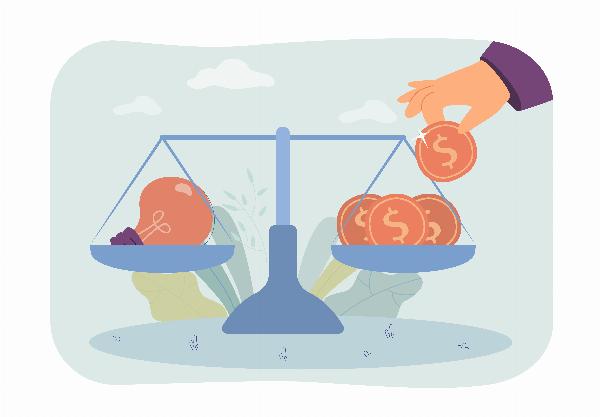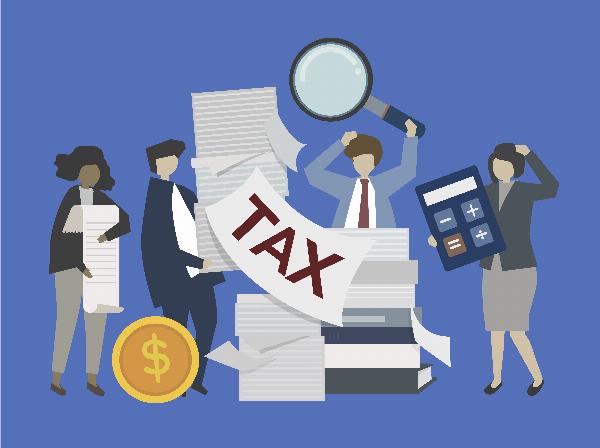 On-Page SEO Optimization – Fix Hidden Errors Killing Rankings!
On-Page SEO Optimization – Fix Hidden Errors Killing Rankings!
Effective Employee Appraisal Methods for Boosting Workplace Performance
Written by Yash » Updated on: June 17th, 2025

Employee appraisals are critical to human resource management, providing a structured process for evaluating and enhancing employee performance. Effective appraisal methods boost workplace performance and foster employee development, satisfaction, and retention. This article delves into various appraisal methods, their benefits, and best practices for implementing them to achieve optimal results.
Understanding Employee Appraisal
Employee appraisal, or performance review or evaluation, is a systematic process organizations use to assess employees' job performance, productivity, and overall contribution. The primary goal of employee appraisals is to identify strengths, areas for improvement, and development opportunities, thereby aligning individual performance with organizational goals.
Key Benefits of Effective Employee Appraisal Methods
- Effective appraisal methods offer numerous advantages, including:
- Enhanced Performance: Regular Feedback and constructive criticism help employees understand their performance and areas needing improvement, leading to enhanced overall performance.
- Employee Development: Appraisals identify skill gaps and provide opportunities for training and development, contributing to employees' professional growth.
- Increased Motivation: Recognizing and rewarding employees' efforts boosts their motivation and morale, fostering a positive work environment.
- Better Communication: Appraisals facilitate open communication between employees and managers, promoting transparency and trust.
- Strategic Decision-Making: Performance data gathered from appraisals assists management in making informed decisions regarding promotions, compensation, and succession planning.
Effective Employee Appraisal Methods
Organizations can use several appraisal methods to evaluate employee performance effectively. Each method has unique features and benefits, and the choice of method depends on the organization's goals, culture, and specific needs.
1. Management by Objectives (MBO)
Management by Objectives (MBO) is a performance appraisal method where managers and employees collaboratively set specific, measurable goals and objectives. Employees are then evaluated based on achieving these goals within a set timeframe.
Benefits of MBO:
- Encourages employee involvement and accountability.
- Aligns individual goals with organizational objectives.
- Provides clear performance expectations.
Best Practices for Implementing MBO:
- Ensure goals are SMART (Specific, Measurable, Achievable, Relevant, Time-bound).
- Regularly review and update goals as necessary.
- Provide ongoing support and resources to help employees achieve their objectives.
2. 360-Degree Feedback
360-degree Feedback involves collecting performance feedback from multiple sources, including peers, subordinates, supervisors, and external stakeholders such as customers. This comprehensive approach provides a well-rounded view of an employee's performance.
Benefits of 360-Degree Feedback:
- Offers diverse perspectives on employee performance.
- Identifies strengths and areas for improvement from various viewpoints.
- Promotes self-awareness and personal development.
Best Practices for Implementing 360-Degree Feedback:
- Ensure anonymity to encourage honest Feedback.
- Use a standardized feedback form to maintain consistency.
- Provide training on how to give and receive constructive Feedback.
3. Behaviorally Anchored Rating Scales (BARS)
Behaviorally Anchored Rating Scales (BARS) combine elements of the traditional rating scale and critical incident techniques. They involve evaluating employees based on specific behaviors associated with different performance levels.
Benefits of BARS:
- Provides clear and objective performance criteria.
- Reduces biases and subjectivity in evaluations.
- Enhances the accuracy and reliability of performance assessments.
Best Practices for Implementing BARS:
- Develop behavior descriptions for each performance level.
- Involve employees in creating the rating scales.
- Regularly review and update the scales to reflect changing job requirements.
4. Self-Assessment
Self-assessment is a method where employees evaluate their performance based on predetermined criteria. This method encourages employees to reflect on their achievements, identify areas for improvement, and set personal development goals.
Benefits of Self-Assessment:
- Promotes self-awareness and personal accountability.
- Encourages employees to take ownership of their performance.
- Provides valuable insights for managers during performance reviews.
Best Practices for Implementing Self-Assessment:
- Provide clear guidelines and criteria for self-assessment.
- Encourage honest and objective self-evaluation.
- Use self-assessment results to facilitate meaningful performance discussions.
5. Rating Scales
Rating scales are a traditional and widely used appraisal method where employees are rated on various performance criteria using a numerical or descriptive scale. Common criteria include job knowledge, quality of work, communication skills, and teamwork.
Benefits of Rating Scales:
- Simple and easy to implement.
- Allows for quantitative comparison of employee performance.
- Provides a standardized evaluation framework.
Best Practices for Implementing Rating Scales:
- Clearly define performance criteria and rating scales.
- Train managers to ensure consistent and unbiased ratings.
- Combine rating scales with qualitative Feedback for a comprehensive evaluation.
6. Critical Incident Technique
The critical incident technique involves documenting specific instances of exceptional or subpar performance. Managers record critical incidents throughout the appraisal period and use them as evidence during performance reviews.
Benefits of the Critical Incident Technique:
- Provides concrete examples of performance, both positive and negative.
- Enhances the accuracy and objectivity of performance evaluations.
- It helps identify patterns and trends in employee behavior.
Best Practices for Implementing the Critical Incident Technique:
- Encourage managers to document incidents regularly and objectively.
- Focus on significant events that impact performance outcomes.
- Use critical incidents as a basis for constructive feedback and development plans.
7. Essay Method
The essay method is a qualitative appraisal technique where managers write detailed descriptions of employees' performance, highlighting strengths, weaknesses, and development needs. This method allows for a comprehensive and personalized evaluation.
Benefits of the Essay Method:
- Provides in-depth insights into employee performance.
- Allows for a nuanced and individualized assessment.
- Facilitates detailed Feedback and development planning.
Best Practices for Implementing the Essay Method:
- Encourage managers to be specific and objective in their descriptions.
- Use a structured format to ensure consistency.
- Supplement essays with quantitative data for a balanced evaluation.
8. Appraisal Letter
An appraisal letter is a formal document summarizing an employee's performance review. It typically includes Feedback on achievements, improvement areas, and development recommendations. This method ensures that employees receive clear and documented Feedback on their performance.
Benefits of an Appraisal Letter:
- Provides employees with a written record of their performance evaluation.
- Facilitates clear communication of Feedback and expectations.
- It can be used as a reference for future performance discussions.
Best Practices for Writing an Appraisal Letter:
- Be clear, concise, and specific in your Feedback.
- Highlight both strengths and areas needing improvement.
- Include actionable recommendations for development.
Best Practices for Conducting Effective Employee Appraisals
To maximize the effectiveness of employee appraisals, organizations should follow these best practices:
1. Set Clear Objectives
Establish clear and specific objectives for the appraisal process. Define what you aim to achieve, whether it's improving performance, identifying training needs, or making promotion decisions.
2. Use a Combination of Methods
Employ a combination of appraisal methods to view employee performance comprehensively. Different methods provide different perspectives and insights, leading to a more balanced evaluation.
3. Provide Regular Feedback
Frequent Feedback is more effective than annual reviews. Regularly communicate with employees about their performance, progress, and areas for improvement. This ongoing dialogue helps employees stay on track and make continuous improvements.
4. Ensure Fairness and Consistency
Maintain fairness and consistency in the appraisal process. Use standardized criteria and procedures to evaluate all employees and ensure that appraisals are free from biases and favoritism.
5. Focus on Development
Emphasize employee development and growth during appraisals. Identify skill gaps and provide training, mentoring, and career advancement opportunities. This focus on development helps employees feel valued and motivated.
6. Train Managers
Provide managers with training on conducting effective appraisals. Equip them with the skills to give constructive Feedback, handle difficult conversations, and support employee development.
Document and Follow-up
Document the appraisal process and outcomes. Keep detailed records of performance reviews, Feedback, and development plans. Follow up on action items and monitor progress to ensure that improvements are being made.
Conclusion
Effective employee appraisal methods are essential for boosting workplace performance and fostering a culture of continuous improvement. Organizations can provide comprehensive and objective evaluations by combining Management by Objectives, 360-degree Feedback, and behavioral Rating Scales. Implementing best practices such as setting clear objectives, providing regular Feedback, and focusing on employee development will ensure that appraisals are fair, consistent, and valuable for employees and the organization.
Note: IndiBlogHub features both user-submitted and editorial content. We do not verify third-party contributions. Read our Disclaimer and Privacy Policyfor details.
Copyright © 2019-2025 IndiBlogHub.com. All rights reserved. Hosted on DigitalOcean for fast, reliable performance.














